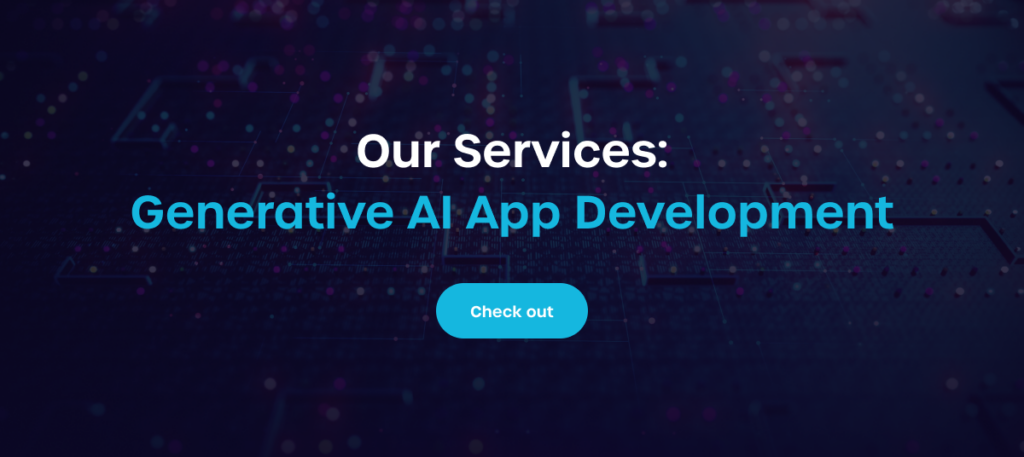In an age where voice commands, virtual assistants, and audio content are becoming everyday tools, speech to text AI has emerged as a crucial technology for improving accessibility, productivity, and automation. Whether you’re transcribing meetings, powering voice interfaces, or generating subtitles, the accuracy and speed of modern speech recognition systems can make or break your workflow.
As we move into 2025, the landscape of AI-powered transcription is more advanced than ever. In this article, we explore the top 6 speech to text AI solutions that are leading the way in innovation, performance, and real-world usability.
Understanding speech to text AI
As voice-driven technology continues to shape how we interact with devices and services, understanding the fundamentals of speech to text AI becomes essential. From enabling hands-free communication to making content more accessible, this technology plays a vital role across industries. But what exactly powers these tools behind the scenes?
Speech to text AI models explained
Speech-to-text, also known as automatic speech recognition (ASR), transcribes spoken words into written format using sophisticated neural networks. Modern STT systems are trained on massive datasets and are capable of handling different accents, languages, and noisy environments with impressive accuracy. Whether used for meeting transcriptions, voice commands, or live captions, the best speech to text AI solutions in 2025 deliver fast and precise results.

“Until recently, transcription was handled by more primitive models that often struggled with even minor variations in pronunciation or background noise. Today, STT models – powered by advanced architectures – are overcoming these limitations and unlocking a range of new possibilities.
For example, proper nouns that used to be unrecognizable by most systems can now be handled more effectively thanks to special prompts that expand the model’s understanding with words it previously didn’t know.”
Popular speech to text AI models
Speech-to-text (STT) technology has made huge strides in recent years, offering fast and accurate transcription across languages and accents. Below is a list of popular AI models for speech to text – each trusted for reliability, performance, and integration flexibility.
ElevenLabs
ElevenLabs’ Scribe is a state-of-the-art speech-to-text (STT) model designed for accurate transcription across 99 languages. It offers features like word-level timestamps, speaker diarization, and dynamic audio tagging, making it suitable for various applications such as meeting documentation, content analysis, and multilingual recognition.
Scribe has demonstrated high accuracy, with a 96.7% accuracy rate for English and improved performance in previously underserved languages like Serbian, Cantonese, and Malayalam. The model is accessible via a structured API, allowing developers to integrate its capabilities into their applications.
OpenAI/Whisper
OpenAI’s Whisper is a versatile speech-to-text (STT) model designed for robust transcription and translation across numerous languages. Trained on 680,000 hours of multilingual and multitask supervised data, Whisper excels in handling diverse accents, background noise, and specialized terminology, making it suitable for various real-world applications.
The model employs a Transformer-based encoder-decoder architecture, enabling it to perform tasks such as language identification, phrase-level timestamping, and multilingual speech transcription. Available in multiple sizes, Whisper can be run locally or integrated via API, offering flexibility for developers. However, users should be aware of potential limitations, including occasional inaccuracies or “hallucinations” in transcriptions, especially in low-resource languages or noisy environments.
UPDATE (September 2025): With the release of GPT-5, OpenAI has brought a new level of intelligence to speech-to-text. While Whisper focuses purely on converting speech into text, GPT-5 treats transcription as the first step in a broader multimodal pipeline. In practice, this means GPT-5 can:
- Transcribe more accurately than Whisper in real-time, especially in noisy conditions or with code-switching between languages.
- Understand context: instead of only producing text, it can summarize spoken content, detect intent, and handle follow-up questions directly from voice input.
- Adapt voice mode: GPT-5’s improved voice system adjusts tone and pace, making transcriptions feel more natural when paired with live captions or meeting notes.
- Integrate seamlessly: developers can now access transcription, translation, and summarization in one API call, rather than stitching Whisper with other LLM features.
For pure transcription tasks, Whisper remains lightweight and cost-effective. But for businesses that need speech-to-text plus context awareness—like meeting assistants, customer service bots, or multilingual training platforms—GPT-5 is rapidly becoming the preferred option.
Google Cloud
Google Cloud Speech-to-Text is a robust API that converts spoken language into text, supporting over 100 languages and dialects. It offers multiple recognition models optimized for various audio types, including phone calls and video content.
The API provides real-time transcription capabilities, delivering immediate results suitable for applications like live captioning. It also includes features such as word-level timestamps and speaker diarization, which identify and label different speakers within an audio stream. Developers can integrate the service using REST or gRPC APIs, making it a versatile choice for various transcription needs.
Deepgram Nova
Deepgram's Nova series represents a significant advancement in speech-to-text (STT) technology, offering high accuracy, speed, and adaptability for various applications.
Nova-2: This model supports 36 languages, including English, Japanese, Korean, and Mandarin, making it suitable for diverse transcription needs. It delivers a 30% lower word error rate (WER) compared to competitors and processes audio with a median inference time of 29.8 seconds per hour, outperforming others by 5 to 40 times. Nova-2 also offers features like speaker diarization, smart formatting, and domain-specific models optimized for sectors such as medical, finance, and meetings.
Nova-3: Building upon Nova-2, Nova-3 introduces real-time multilingual transcription, handling code-switching across 10 languages, including English, Spanish, French, and Japanese. It achieves a 54% reduction in WER for streaming and 47% for batch processing compared to competitors. Nova-3 also offers self-serve customization, allowing users to adapt the model to specific vocabularies without retraining, and includes features like enhanced numeric recognition and real-time redaction of sensitive information.
Both models are accessible via Deepgram's API, providing scalable solutions for applications ranging from customer support and media transcription to healthcare documentation.
Azure
Azure AI Speech delivers advanced speech-to-text capabilities with support for over 140 languages and dialects. It offers both real-time and batch transcription, making it suitable for use cases like live captioning, call analysis, and content indexing. The service includes features such as speaker diarization, word-level timestamps, and pronunciation assessment.
Developers can enhance accuracy through custom models tailored to specific vocabulary or acoustic environments. Azure also integrates with Whisper for improved multilingual transcription. With flexible APIs, SDKs, and reliable cloud infrastructure, it's a strong option for both small apps and enterprise-scale solutions.
Open-Source projects on GitHub
If you're exploring open-source STT tools, the speech-to-text-js project by DKMitt is a notable example. This browser-based application utilizes the Web Speech API to convert spoken words into text and vice versa. It allows users to create voice notes, save them locally, and replay them, making it a practical tool for experimenting with voice-enabled web applications. The project is built with HTML, CSS, JavaScript, and Bootstrap, and leverages the browser's native speech recognition and synthesis capabilities.
For more advanced or offline STT solutions, you might consider projects like DeepSpeech, an open-source engine developed by Mozilla that can run on devices ranging from Raspberry Pi to high-power servers. Another option is Vosk, which supports multiple languages and offers bindings for various programming languages. These projects provide more extensive features and flexibility for developers looking to integrate speech recognition into their applications.

How to choose the right speech to text AI model?
With a growing number of options on the market, selecting the best speech to text AI solution for your specific use case can be challenging. Whether you're building a transcription service, integrating voice input into an app, or creating real-time captions, the model you choose should align with your technical and business needs.
Key factors to consider when choosing speech to text AI
When comparing different speech to text AI models, here are the most important features and capabilities to look for:
- Accuracy – Especially in noisy environments or for specialized terms.
- Speaker diarization – Can it tell who’s speaking?
- Timestamps – Useful for subtitles or content indexing.
- Multilingual support – Helpful for global products.
- Streaming vs. batch – Real-time vs. post-processing needs.
Best speech to text AI by use case
Here are the best models to use in specific conditions:
| Use case | Best speech to text AI |
| Multilingual transcription | ElevenLabs Scribe |
| Real-time transcription | Deepgram Nova-3 |
| Developer flexibility & customization | Azure AI Speech |
| Open-source experimentation | Open-source GitHub projects |
| Meeting & media transcription | Google Cloud STT |
| Transcription + Translation | OpenAI Whisper |
FAQ - Speech to text AI
What is the difference between real-time and batch speech to text transcription?
Real-time transcription processes audio as it’s being spoken, making it ideal for live captions, meetings, or customer support. Batch transcription, on the other hand, is used for pre-recorded audio and offers more flexibility for post-processing tasks like editing or translation.
How accurate are modern speech to text AI models?
Accuracy varies by model and use case, but leading models like Deepgram Nova-3 and ElevenLabs Scribe can achieve over 95% accuracy in ideal conditions. Performance may vary with accents, background noise, or domain-specific language, which is why features like custom vocabulary and noise handling are critical.
Can speech to text AI handle multiple languages and speakers in the same recording?
Yes, advanced models such as Whisper, Azure AI Speech, and Deepgram Nova-3 support multilingual transcription and speaker diarization. This means they can not only transcribe different languages but also distinguish between multiple speakers in one audio file.
What are other speech-to-text (STT) models as of September 2025?
As of 2025, the STT landscape offers a diverse mix of specialized models—ranging from large-scale open-source architecture to lightweight edge solutions and cloud APIs. Here’s a snapshot of prominent options beyond Whisper and GPT-5:
Open-Source STT Models:
- Granite Speech 3.3 (IBM) – 8B parameters, WER ~ 5.85%, Apache 2.0 license; strong open-source contender for enterprise usage.
- Whale – Large-scale multilingual ASR with w2v-BERT/E-Branchformer, achieving ~2.4% WER on Librispeech, outperforming Whisper large-v3.
- FireRedASR (Mandarin-focused) – Includes LLM-enhanced ASR versions achieving CER ~ 3.05% on Mandarin benchmarks with around 8.3B parameters, outperforming prior SOTA.
- Flavors of Moonshine – Tiny, specialized edge ASR models (~27M parameters) for underrepresented languages; outperform Whisper Tiny/Small even with much larger model sizes.








